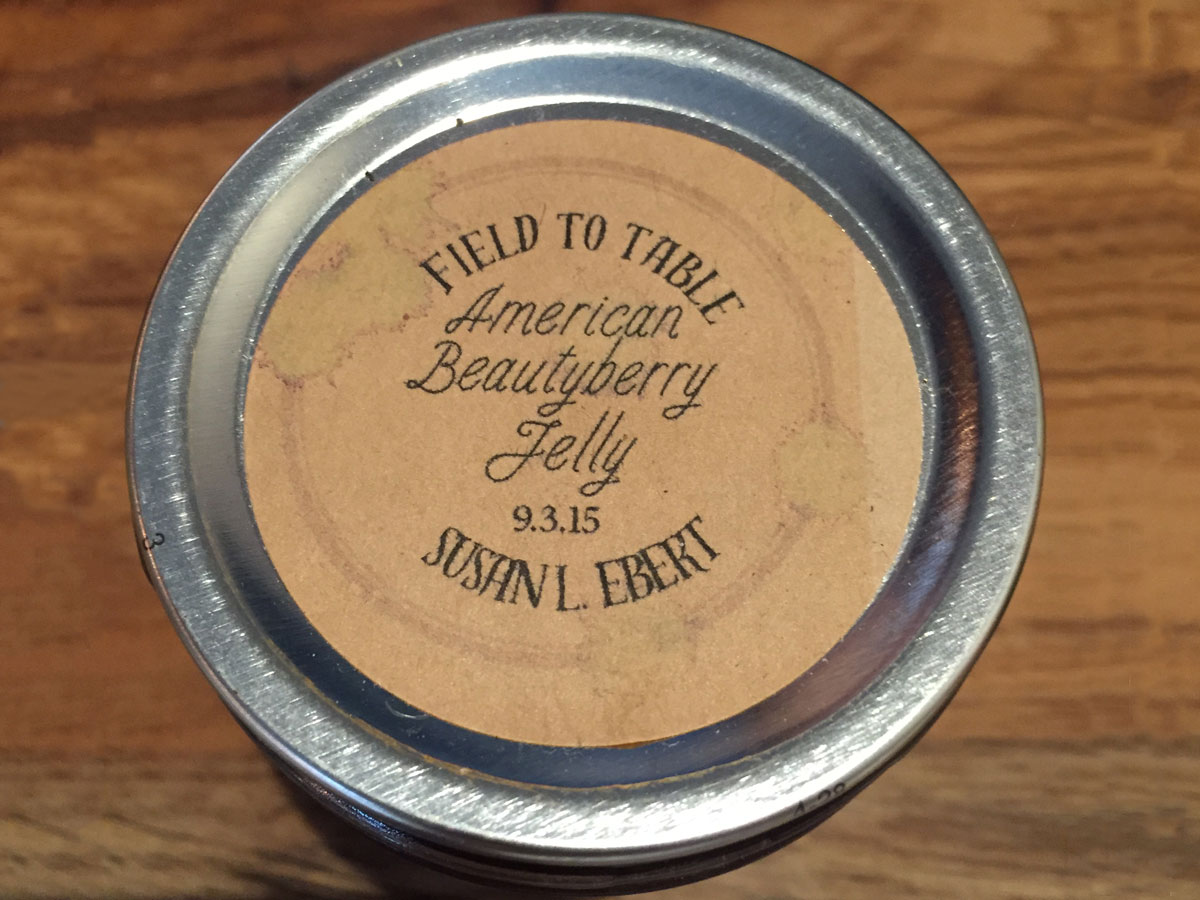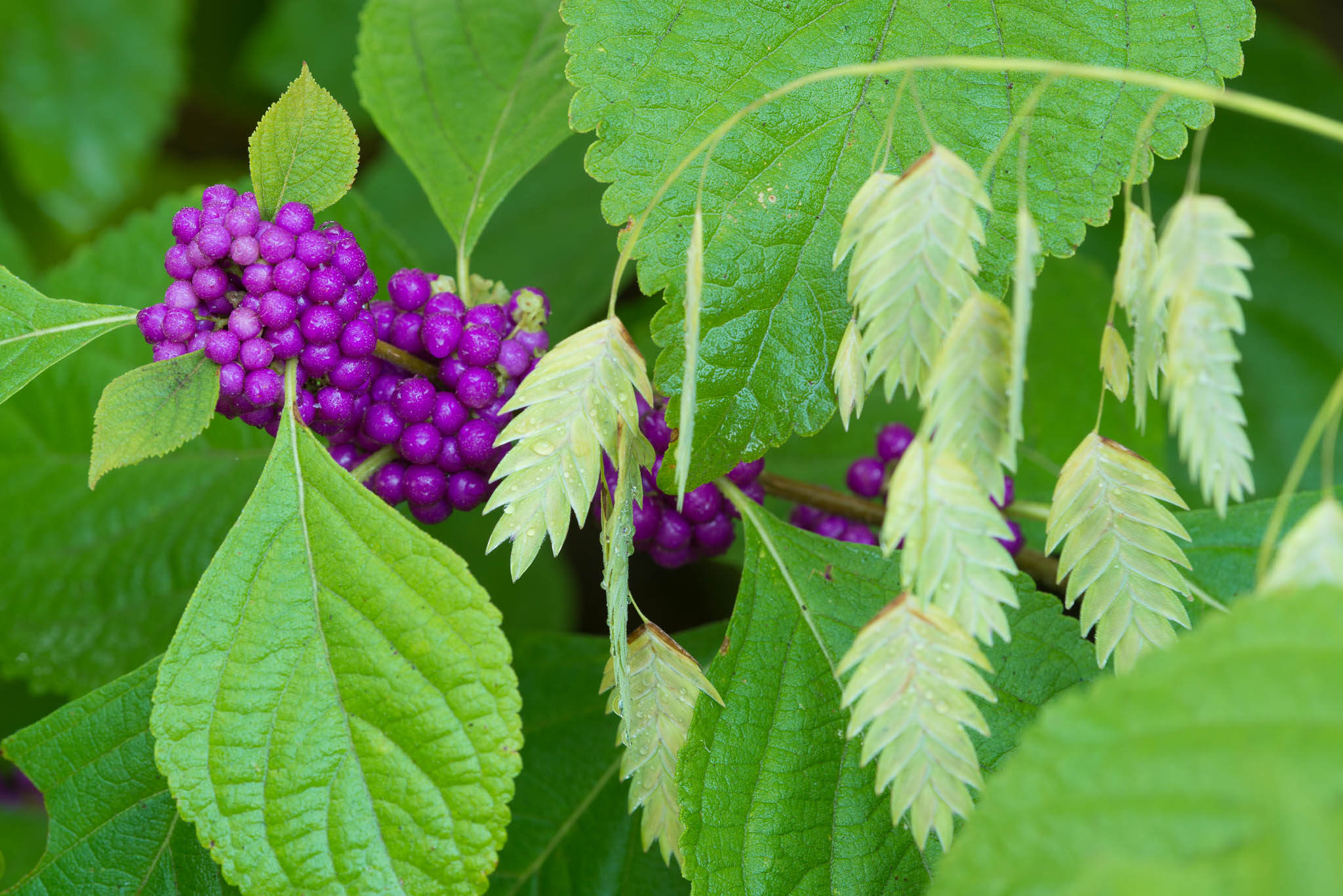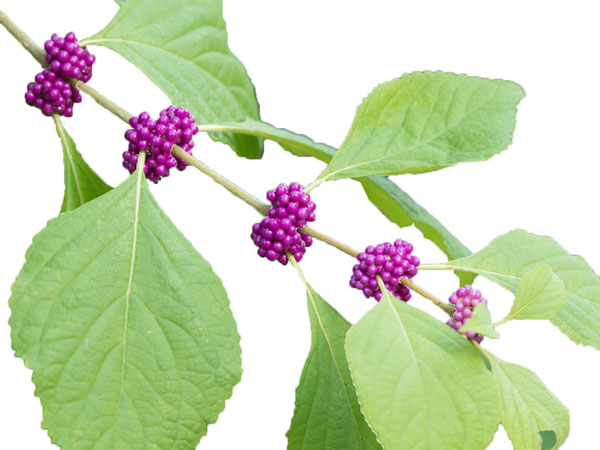American Beauty
American beautyberry (Callicarpa americana) — native to the southeastern U.S. — is one of those “wow” plants that often stops people in their tracks. It’s also one of the most searched plants in our native plant database. Here are a few reasons why American beautyberry deserves the attention:
1. It Repels Mosquitoes
In 2006, scientists from the USDA-ARS confirmed what people in the Mississippi hill country already knew — American beautyberry can ward off biting bugs. They discovered three repellent chemicals in the leaves of beautyberry — callicarpenal, intermedeol and spathulenol — all shown to repel the pesky biting bugs. “For almost 40 years, I’ve grabbed a handful of leaves, crushed them and rubbed them on my skin with the same results,” said Charles T. Bryson, a USDA-ARS botanist in Mississippi. Plant this one around your back patio, and remember this tip when you’re in the woods with pesky critters.

Field to Table American beautyberry jelly. PHOTO Lee Clippard
2. It Makes a Lovely Jelly
Those plump, juicy, bright purple berries make a tasty jelly that — when delivered on grilled bread — will make you think twice about grabbing your standard strawberry. Look for a recipe in Susan Ebert’s “The Field to Table Cookbook: Gardening, Foraging, Fishing, & Hunting,” or drop by Dai Due in Austin, Texas. See our article about Jesse Griffiths use of native foods in his pantry here.
3. It’s Manna for Mockingbirds
You can only make jam if you beat the mockingbirds. Mockingbirds love these berries, and if they take a liking to a beautyberry shrub in your garden, you will marvel as the berries disappear down their gullets in short order. But don’t let the mockingbirds bum you out. Though you might have been waiting all summer for those berries to shine in your fall garden, go ahead and pat yourself on the back for supporting wildlife.

American beautyberry (Callicarpa americana) and inland sea oats (Chasmanthium latifolium). PHOTO Wildflower Center
4. It Looks Stunning in Fall & Winter Landscapes
Across American beautyberry’s southeastern range, it is a stunner in the landscape. In Texas, the berries begin to ripen in late summer and serve as a harbinger to the fall season approaching. The purple clusters pop on branches laden with wide, lime green leaves. It’s a great color combo. Plant this shrub with turkscap (Malvaviscus arboreus) for a particularly nice marriage of red and purple.
As fall progresses, beautyberry’s leaves turn yellow, so the color palette shifts to yellow and purple before the leaves fall off all together. What’s left are long arching branches dotted with purple balls of berries. What’s not to love?
SPECIAL NOTE: Beware the look-alikes. There are several non-native varieties of beautyberry in the nursery trade, which, of course, we don’t recommend. Anything with juicy berries is ripe for becoming an invasive. And why buy something non-native when our native is just so darn perfect?


